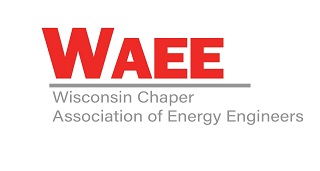
Are you struggling with rising energy costs or concerned about potential disruptions to the energy grid? Have you considered adding renewable energy to your business but are unsure about the options available? The reduction of fossil fuels has become a global sustainability initiative, and new technologies or advancements in existing technologies continue to make headlines. All of this can be confusing and may cause you or your company to pause your initiative(s), but there are viable options that you can deploy today to address your energy resilience, sustainability and cost needs.
At EnTech Solutions, we help companies navigate a Path to Smarter Energy™. There are many renewable solutions available, and two of the most efficient and economical options are wind and solar power. Both are dependent on Mother Nature and provide differing levels of energy output based on seasonality, as noted in the following graphic.
Let’s examine the respective benefits and limitations of solar and wind technologies.
Wind Energy
Wind energy is a renewable energy source that harnesses energy using turbines which convert wind into electricity. One advantage of wind power is its scalability, from a small individual turbine to numerous land or sea arrays. Wind towers take up limited ground space for the power output they provide.
Wind turbines have been in place for decades and their safety and efficiency are well established. Many systems can operate with as little as 6 mile-per-hour wind speeds. Wind can produce large amounts of energy without releasing any emissions that could harm the environment. Windmills can be located on farmland with very little loss of valuable growing resources, making them a perfect pairing for the plains of the U.S. Wind can blow both day and night, with average wind speeds higher in the winter months. In addition to the seasons, there are areas of the U.S. that have more active wind currents based on geography, making wind a viable renewable energy solution.
There are some considerations to keep in mind that relate to wind power. Since wind turbines need unobstructed access to the wind currents, they are best suited for rural locations. It takes a lot of equipment to prep a site, transport and assemble the towers, which can be costly. Windmills are modular, so adding more units to a site is relatively easy to meet growing energy needs, but proper siting and mitigation strategies are crucial to successful operations.
Solar Energy
Solar energy is thermal energy harvested from sunlight utilizing photovoltaic (PV) cells to convert sunlight into electricity. The size of a typical solar panel has largely remained consistent, but the efficiency, or power output, continues to increase, making solar arrays today a cost-efficient energy source. Since the 1980s, solar panel efficiency has increased as much as 25% and the costs have come down on average 10% year over year. They are relatively easy to install, often without any specialized or expensive equipment.
Solar panels work best when they have full access to sunlight, making rooftop mounting solutions ideal in urban areas. Carport solar options are viable for businesses and retail parking lots, which also benefit vehicle owners by reducing the damaging effects of the sun’s UV rays on vehicles. New PV cells are being made with flexible, lightweight materials, adding to the potential for use on irregularly shaped surfaces or older buildings not able to support the weight of traditional solar panels. Solar panels can be mounted on single- or multi-axis structures to allow the arrays to track the sun’s daily travel for greater efficiency.
Some considerations for solar include time of use; the sun isn’t available 24-hours a day, and weather conditions add unpredictable cloud cover. Additionally, while a rooftop is often the best location for solar, not all rooftops can handle the weight of solar panels nor have adequate sun access. Careful planning is important for safe, effective solar installation.
Path to Smarter Energy
Both wind and solar energy can be a part of your sustainability efforts to reduce your carbon footprint and energy costs. However, energy generation is only part of the Path to Smarter Energy. At EnTech Solutions, we take a holistic approach to your energy needs. It’s important to first understand what is driving your energy usage. This can be done with an energy assessment to identify when and where your energy usage is highest. This data is analyzed to investigate if conservation or automation solutions could reduce energy usage before adding more energy generation. If generation like wind or solar is decided on, selecting the right solution and size for your business can be done using our proprietary software solution called Energy DNA™, which enables us to analyze your energy usage and utility tariff cost structure to create an energy load profile. Weather data from your exact location is input to model the power which could be generated by both wind and solar to meet your current and future energy needs. We provide financial metrics to help you make an informed decision on the best energy solution for your business, including any grants or incentives available.
If you are ready to start your energy journey, EnTech Solutions can help you every step of the way. Contact us for a free energy assessment for your organization.
Thank you for checking out the EnTech Solutions blog. To stay up to date with technologies, developments and trends about clean energy, please subscribe.









